Wagon Trail Campground, Rowleys Bay, Wisconsin Peninsula
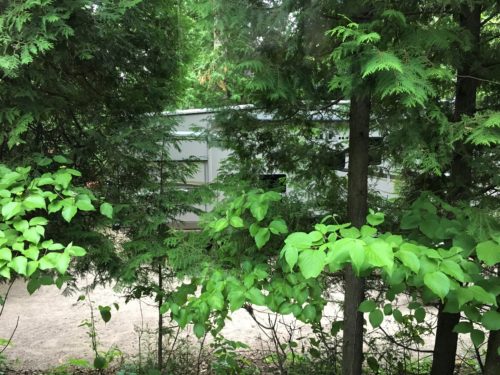
Good morning, new neighbors!
Not a lot of activity today.
We tried another trail; our skin more covered this time, but still not enough. We turned around. Again. But this time, we didn’t even reach our destination – the Mink River.

Yep. We carried umbrellas with us. And we used them for a couple of minutes.
I also hid my hand in mine when I closed it to ward of the mosquitoes!
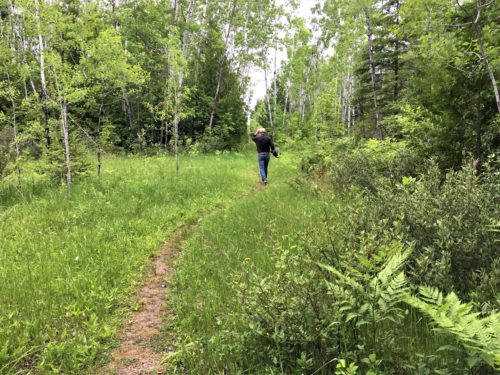
And the Mosquito Flail Dance continues . . . .

At least I got a flower picture today! Cheery daisies! They don’t give off the same effect when you’re being pursued by things trying to devour you!
In an effort to redeem my good nature, Blaine offered fresh baked goods. Actually, I suspect it was more for him than for me, but we’ll give him props. 😊
That resort I mentioned yesterday, not only has a fish boil, but they also have “Grandma’s Swedish Bakery”.

I have no explanation as to why I took this.
I just liked it! : )

We passed these on the way to the boil.
They grow wild and abundantly around here.
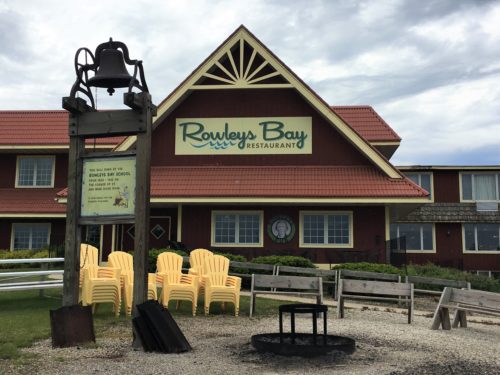
There’s where the fishboil takes place.

Yellow iris growing outside the front of the resort.
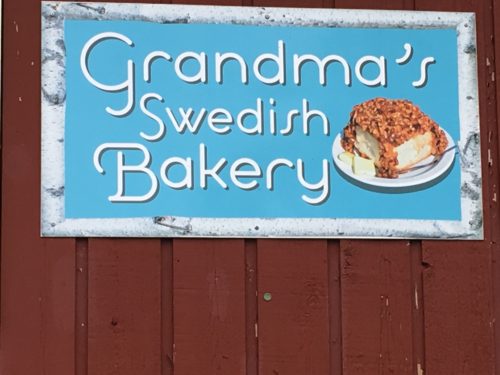
We settled on sharing a cinnamon roll because they were huge and we’d had breakfast. Yumm-mmy!!!!!!
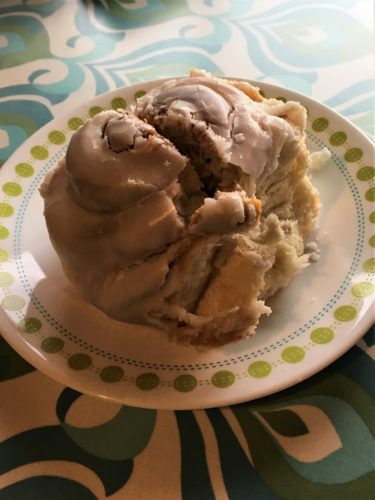
Oh wow was this good!!

The view
That went a really long way to sweetening my disposition. 😊
And we made reservations for tonight to attend the fish boil. They seem to be all the rage up here, so it should be interesting!
Since we couldn’t hike, we took a drive to check out a town called Ellison Bay. Boy. There sure wasn’t much here. We went into the store and bought a couple of bananas and some postcards. Then we left town.

This is about the only really nice looking thing in town and we don’t even know what it is.
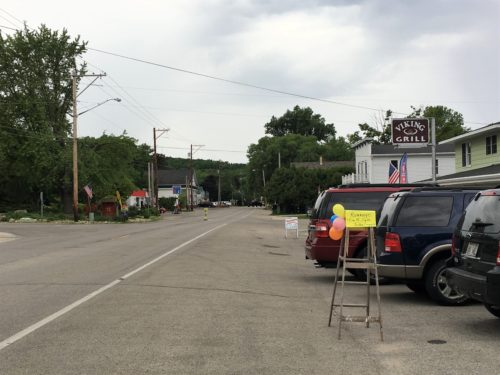
Downtown Ellison Bay.
So much different than the other Bay towns we’ve seen!
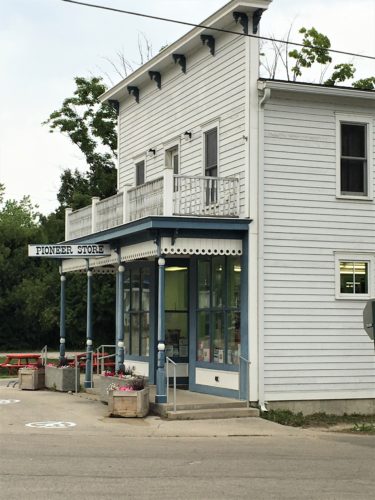
Here’s the grocery store
It started raining just after we got home and we were a bit concerned that the fish boil would be a bust. We had asked about weather and were told if it’s really bad, they’ll have us watch from inside. Ugh! That would really ruin the ambiance.
We needn’t have worried. The weather cleared out just in time!
So. What’s a fish boil? This description is straight from the Door County website:
A big part of the fish boil experience is understanding the basics of what your boil master is adding to the pot. Locally caught whitefish is boiled on an open fire, in an outdoor community-style kitchen, usually in a large metal kettle.
The first step is to add salt to the water and bring it to a boil. Next come the potatoes. Once the potatoes are cooked, onions are added (this step varies from boil to boil). Last, but not least, the star of the show, Lake Michigan whitefish, is added. Once the fish are just about ready, the boil master will signal that the boil over is about to start, which is the fiery spectacle that occurs when kerosene is thrown onto the fire.
As much as fish boils are a part of Door County’s popular culture, the act of fish boiling is actually a part of settler history here in Door County.
Fish boiling was brought to the peninsula in the late 1800s by Scandinavian immigrants who needed an economical way to feed large groups of workers. Many places and cultures have their own style or version of a fish boil, but the one tourists see today is based off of what the Scandinavian settlers used. It wasn’t until about 1961 that the fish boil that is used today became a popular tourist attraction.
My description?
We arrived early and sat around the cauldron in plastic chairs, in great anticipation. The fire was already going under the cauldron of water.
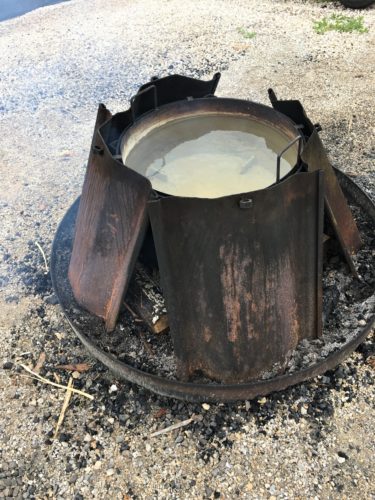
You can’t tell, but the fire’s going underneath.
Those are metal screens, I’m sure to keep the fire hot and the wind at bay.
It was pretty breezy tonight!
After a bit, a guy in costume showed up. (This Rowley’s Bay Resort Fish Boil is the only one that offers a history talk and adds a buffet dinner to the boil food.)
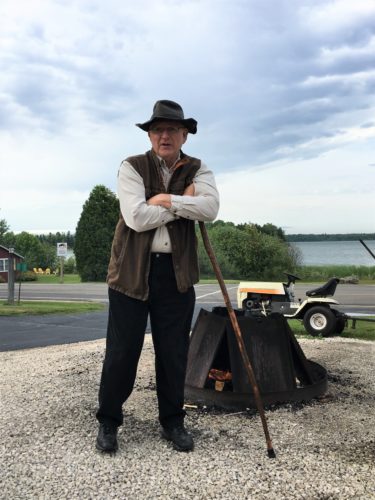
After he gave a brief history of Rowley’s Bay, that included Father Andre from 1680 and his successful attempt at showing Christ to the native Indians, he switched into Peter Rowley mode, the man the Bay is named after.
Peter Rowley and his family only made their residence here for two years; from 1840-42. He was what you might call a curmudgeon. Not happy. Not friendly. (Sounds like he should’ve talked with Father Andre!) When he saw the smoke on the horizon of another settler, he always moved on. His poor wife! But he was able to make a living fishing and hunting and eventually, after moving on, started a commercial fishing business with his son. I’m still not entirely sure why the Bay was named for him. And as far as I can tell, there are no photographs of Mr. Rowley. You didn’t really expect a curmudgeon to pose for a photo op did you? 😊
While we were learning history, our dinner was being prepared right before our eyes.
The chef came out and poured three pounds of salt into the water, then added a basketfull of small, whole, red potatoes and stoked the fire.

Salt and potatoes
The talk continued.
The chef returned and dumped in a bunch of large, whole, onions and stoked the fire.
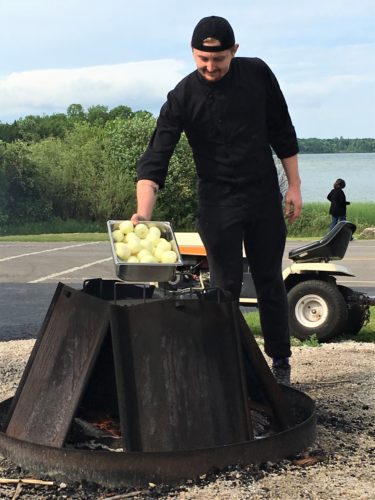
Onions
The talk continued.
The chef returned with chunks of whitefish. The fish were gutted, but that’s it. Bones and skin were still on the 4” wide “whole” pieces. He added that basket to the boil, presumably resting on top of the potatoes and onions, and stoked the fire.
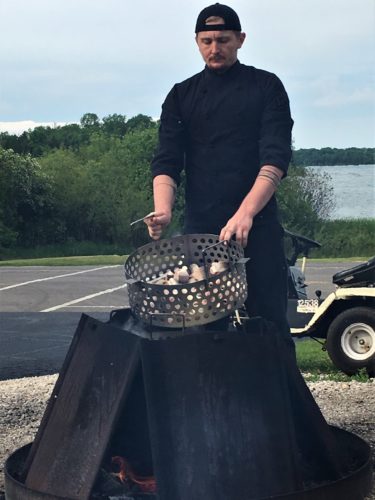
Whitefish chunks
The talk continued.
Until the chef returned and gave a two-minute warning.
Two minutes later, the talk ended, we were told to get up and move back. Once we were out of the way, the chef rang the school bell . . . .
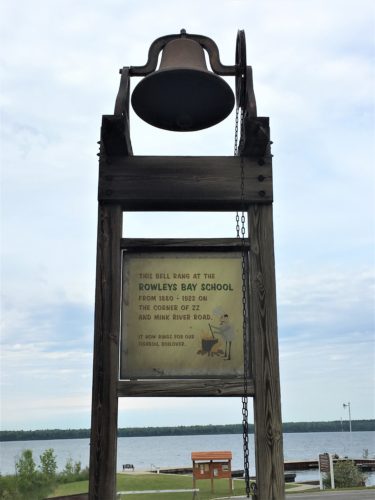
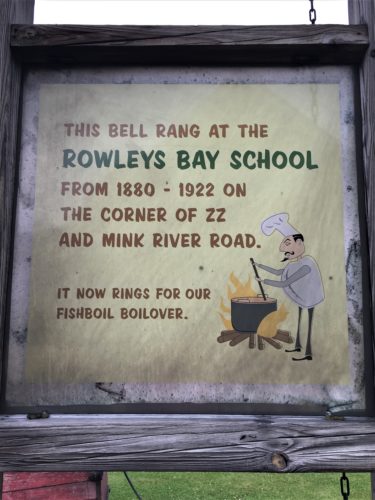
. . . . then dumped kerosene on the fire . . . .
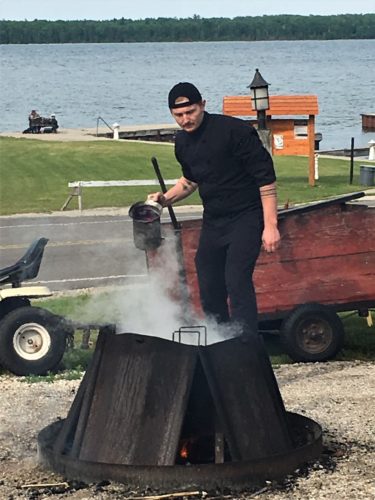
and . . .
WOOSH!!!!
Bubble, bubble, toil and trouble!!
(technically this is a misquote from Shakespeare’s MacBeth, but I won’t tell if you won’t.)
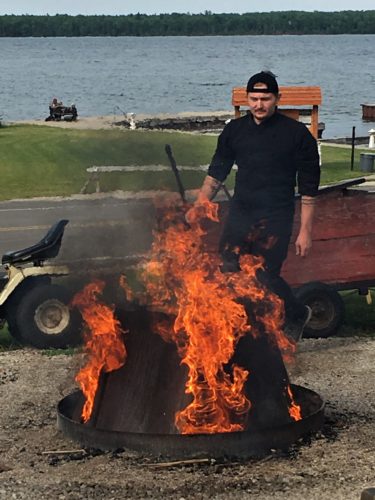
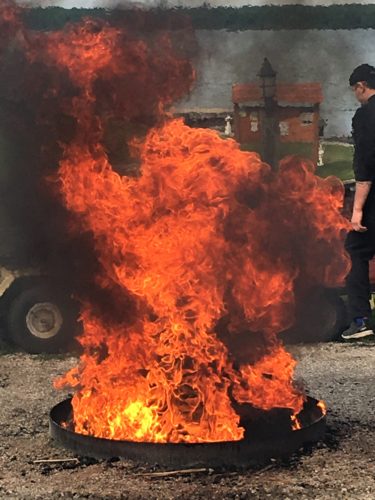
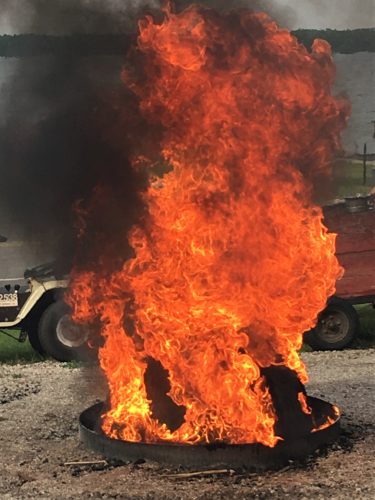
We were supposed to be able to see the water boil up and over the cauldron, but the flames were too intense to see through.
Still, it was pretty exciting!

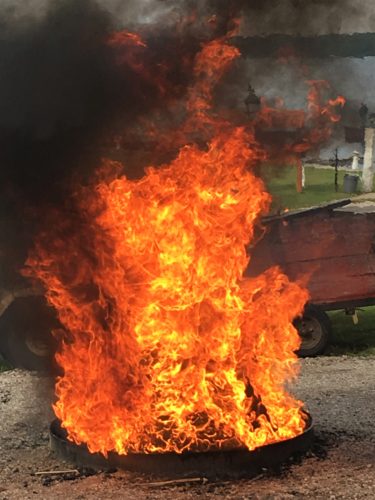
Spectacular!!!
And it all took 30 minutes.
We were then escorted inside where a large buffet table awaited us. This is also the only boil that has a buffet included in the price. I looked at a couple of other restaurants, and theirs seem to run about $2 less per person, but all you get to eat are the potatoes, onions and fish, cole slaw and a slice of pie.
Well, we got all you can eat! Four soups, fairly inclusive salad bar, three more entrees, veggies, and . . . . dessert made at Grandma’s Swedish Bakery (also on the premises)!
The price for dinner, show, and history lesson? $22.00.
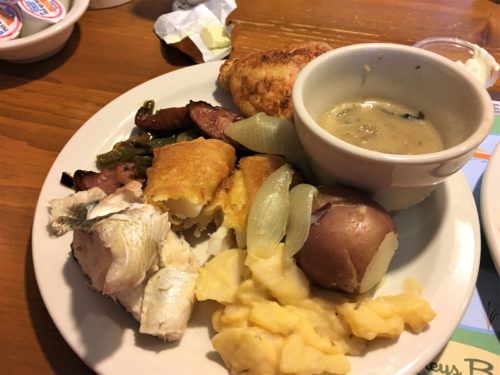
See the red potato, onions and whitefish?
They were really good, but you had to pick all the bones out of the fish and take the skin off before you could eat it.
Oh, man are we stuffed!!! Why do we insist on eating at buffets??? But everything was delicious! Good thing we walked here!
